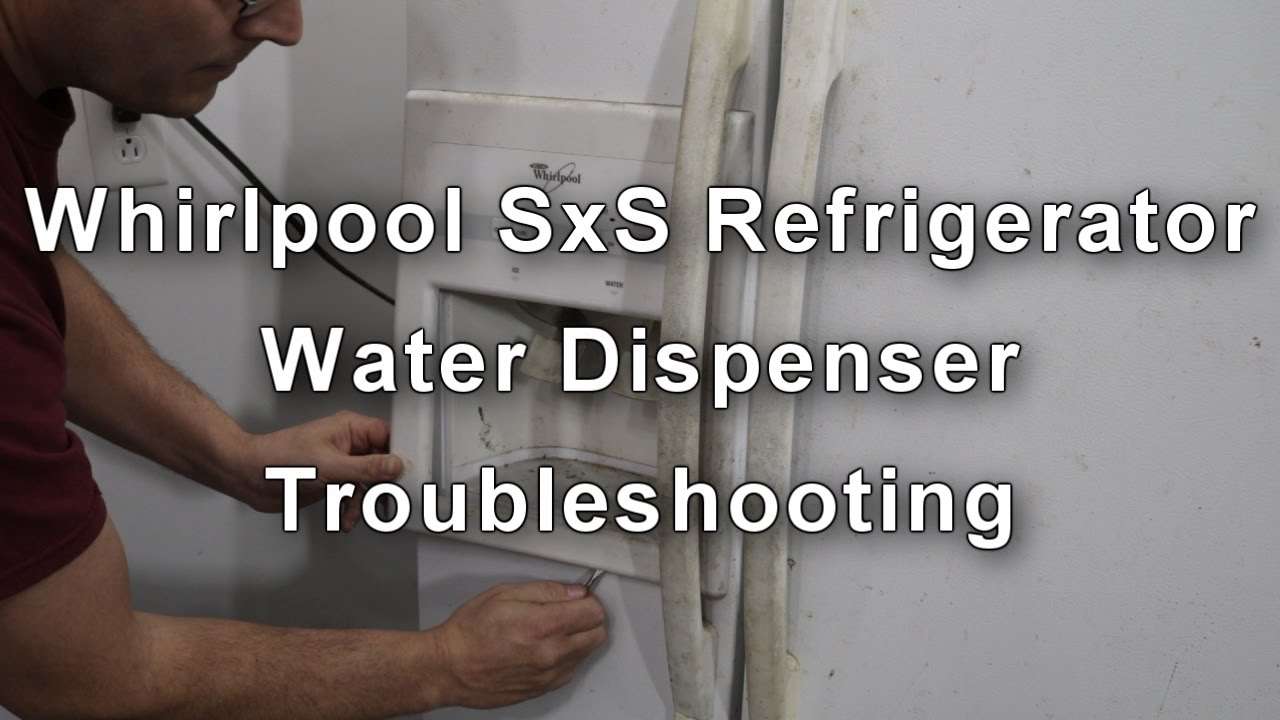Experiencing a malfunctioning water dispenser on your Whirlpool refrigerator immediately after replacing the filter can be incredibly frustrating. You’ve diligently maintained your appliance, expecting fresh, filtered water, but instead are met with… nothing. This issue, while seemingly perplexing, often stems from a few common culprits related to the filter replacement process and the refrigerator’s internal mechanisms. Let’s explore the potential reasons behind this frustrating situation and how to troubleshoot a Whirlpool refrigerator water dispenser that has stopped working after a filter change.
Common Causes and Troubleshooting Steps
Several factors could contribute to your Whirlpool refrigerator’s water dispenser ceasing to function post-filter replacement. Here are some of the most frequent causes and practical steps to diagnose and resolve them:
- Incorrect Filter Installation: This is the most common culprit. Even if the filter seems securely in place, a slight misalignment can prevent proper water flow.
- Air Lock in the Water Line: Replacing the filter can introduce air into the water lines, creating an air lock that obstructs water flow.
- Clogged Filter (Even New): While rare, a manufacturing defect or sediment buildup in a new filter can impede water flow.
- Water Inlet Valve Issues: The water inlet valve, which controls the flow of water into the refrigerator, may be malfunctioning.
- Frozen Water Line: In some cases, a frozen water line can prevent water from reaching the dispenser.
Detailed Troubleshooting Guide
- Re-install the Filter: Remove the filter and carefully re-install it, ensuring it’s properly aligned and securely locked into place. Listen for a click or feel for a secure connection. Refer to your refrigerator’s user manual for specific instructions.
- Flush the Water Line: After re-installing the filter, dispense water for several minutes (typically 2-5 gallons); This helps remove any trapped air and flush out any sediment that may be present.
- Check the Filter Type: Ensure you’re using the correct type of filter recommended for your Whirlpool refrigerator model. Using an incompatible filter can cause flow problems.
- Bypass the Filter: If flushing doesn’t work, try bypassing the filter altogether (if your refrigerator has a bypass option). If the water dispenser works with the filter bypassed, the problem likely lies with the filter itself.
- Inspect the Water Inlet Valve: Locate the water inlet valve (usually at the back of the refrigerator) and visually inspect it for any signs of damage or leaks. If you’re comfortable working with electrical components, you can use a multimeter to test the valve’s continuity. (Caution: Disconnect the power supply before working with electrical components.)
- Check for Frozen Water Lines: Inspect the water lines for any signs of freezing. If you suspect a frozen line, try thawing it by gently warming it with a hairdryer (on a low setting) or leaving the refrigerator unplugged for a few hours.
When to Call a Professional
If you’ve exhausted the troubleshooting steps above and your Whirlpool refrigerator water dispenser remains stubbornly non-functional, it’s time to consult a qualified appliance repair technician. Issues like a faulty water inlet valve or a damaged control board require specialized knowledge and tools to diagnose and repair. Attempting to fix these problems yourself could potentially damage your refrigerator further or pose a safety risk.
PREVENTATIVE MEASURES AND LONG-TERM MAINTENANCE
While troubleshooting is crucial, preventing future issues with your Whirlpool refrigerator’s water dispenser can save you time and frustration. Implementing a few preventative measures and adhering to a regular maintenance schedule can significantly reduce the likelihood of problems arising after filter replacements.
– Regular Filter Replacement: Adhere to the manufacturer’s recommended filter replacement schedule. Typically, this is every six months, but it can vary depending on your water quality and usage. Using the same filter for extended periods will cause it to clog and impede water flow, potentially damaging other components.
– Use Genuine Whirlpool Filters: While aftermarket filters may seem like a cost-effective alternative, they may not meet Whirlpool’s specifications and can cause performance issues or even damage your refrigerator. Genuine filters are designed to work seamlessly with your appliance.
– Inspect Water Lines Regularly: Periodically inspect the water lines connected to your refrigerator for any signs of leaks, kinks, or damage. Address any issues promptly to prevent further complications.
– Monitor Water Pressure: Low water pressure can affect the performance of your water dispenser. If you notice a decrease in water flow, check your home’s water pressure to ensure it’s within the recommended range.
– Clean the Dispenser Nozzle: Regularly clean the dispenser nozzle with a damp cloth to remove any mineral deposits or debris that may accumulate and obstruct water flow.
UNDERSTANDING WATER QUALITY AND ITS IMPACT
The quality of your water supply plays a significant role in the performance and longevity of your refrigerator’s water dispenser. Hard water, which contains high levels of minerals like calcium and magnesium, can lead to mineral buildup in the water lines and dispenser components, potentially causing clogs and malfunctions. Consider using a water softener or installing a whole-house water filter to improve the overall quality of your water and protect your appliance.
Furthermore, sediment and other particulate matter in your water can also clog the filter and water lines. If you live in an area with poor water quality, you may need to replace your filter more frequently than recommended or consider installing a pre-filter to remove sediment before it reaches the refrigerator.
By taking proactive steps to maintain your Whirlpool refrigerator’s water dispenser and address any underlying water quality issues, you can ensure years of reliable performance and enjoy fresh, filtered water whenever you need it. Remember, consistent maintenance is key to preventing problems and extending the lifespan of your appliance.







